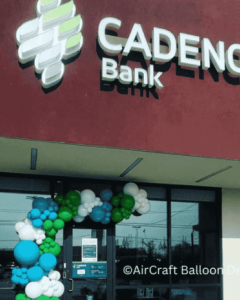Potential Losses in US Banks from Commercial Real Estate Decline: Exploring the Impact
Analyzing the challenges faced by the US commercial real estate sector, this article explores the potential losses of up to $250 billion that could be incurred by US banks. Assessing the impact on mortgage banks, it delves into the factors contributing to this situation.
In recent times, the US commercial real estate market has been experiencing a serious recession as office rental rates continue to decline. This downturn has raised concerns among investors and mortgage banks about potential financial losses. By analyzing available data, it has been estimated that US banks may suffer losses of up to 250 billion USD due to the challenges faced by the commercial real estate sector, particularly in the office segment.
In this article, we will explore the factors contributing to this situation and assess the impact on mortgage banks.
1. The Unsettling Office Real Estate Sector
1.1 Low Real Estate Occupancy Rates
One of the primary stress factors affecting the office real estate sector is the persisting phenomenon of remote work. With the ongoing work-from-home trend, many businesses have reduced their office space requirements, leading to low real estate occupancy rates. This decline in demand has directly impacted office rental rates, causing them to plummet.
1.2 Pressures from Higher Interest Rates
Simultaneously, higher interest rates have added additional pressure on homeowners to refinance their loans. This has diverted their attention away from commercial real estate investments, further impacting the office rental market. The combination of low occupancy rates and higher interest rates has created a challenging environment for office real estate owners and investors.
2. The Punches to Commercial Real Estate
The abovementioned factors have dealt significant blows to the commercial real estate sector. As a result, US banks are expected to face substantial financial losses, potentially reaching an alarming figure of 250 billion USD. This projection highlights the gravity of the situation and underscores the urgency for preventive measures.
3. Bright Spots Amidst the Gloom
While the office real estate sector remains gloomy, it's essential to recognize that not all areas of commercial real estate are facing the same challenges. There are still bright spots in other sectors, such as industrial real estate and the multi-family housing market.
3.1 Industrial Real Estate
The demand for industrial real estate has surged in recent years, primarily driven by the growth of e-commerce. As online shopping continues to flourish, the need for storage facilities, distribution centers, and fulfillment centers has increased significantly. This trend has propelled the industrial real estate market and shielded it from the ongoing recession in the office rental sector.
3.2 Multi-Family Housing Market
Similarly, the multi-family housing market has experienced resilience in the face of the commercial real estate recession. The continued demand for rental apartments and condominiums has provided stability in an otherwise tumultuous market. People still need places to live, and this steady demand has helped sustain the multi-family housing sector.
3.3 High-End Shopping Centers
It is worth noting that high-end shopping centers are also defying expectations. In the past, shopping malls were often deemed to be dying entities. However, Unibail-Rodamco-Westfield Group, a prominent player in the commercial real estate field, has recently scrapped its plan to sell its US assets. Instead, the company has committed to investing billions of dollars to reorganize its best-performing commercial centers. This unexpected turn of events demonstrates renewed hope in certain segments of the commercial real estate industry.
Unibail-Rodamco-Westfield Group
Unibail-Rodamco-Westfield Group operates as an owner, developer, and operator of high-quality, sustainable real estate assets in vibrant cities across Europe and the US. Presently, the group manages an extensive portfolio of 75 shopping centers spanning 12 countries.
In conclusion, the US commercial real estate market is facing a serious recession, primarily driven by declining office rental rates. This downturn has the potential to cause significant financial losses for mortgage banks, with estimates reaching as high as 250 billion USD. However, it is important to acknowledge that not all areas of the commercial real estate sector are experiencing the same level of hardship. Bright spots can be found in industrial real estate, the multi-family housing market, and even high-end shopping centers. Although challenges persist, these segments demonstrate resilience and potential opportunities for investors and industry players.
FAQs
1. Is the decline in office rental rates a temporary or long-term issue?
- The decline in office rental rates is a result of several factors, including the work-from-home trend and higher interest rates. While some effects may be temporary, the long-term impact remains uncertain.
2. Are all banks equally affected by the commercial real estate recession?
- No, the impact on banks varies depending on their exposure to the commercial real estate sector and the specific segments they are involved in. Some banks may be more resilient due to diversified portfolios or alternative investments.
3. What can mortgage banks do to mitigate potential losses?
- Mortgage banks can implement risk management strategies, closely monitor their commercial real estate portfolios, and explore opportunities in more resilient sectors of the market, such as industrial real estate and multi-family housing.
4. Will the resurgence of high-end shopping centers benefit the overall commercial real estate market?
- While the resurgence of high-end shopping centers offers a glimmer of hope, it is unlikely to uplift the entire market significantly. The challenges faced by the office rental sector require broader measures and solutions.
5. What role does government intervention play in alleviating the commercial real estate recession?
- Government intervention, such as introducing policies to stimulate economic growth, may play a crucial role in revitalizing the commercial real estate market. However, the effectiveness and extent of such interventions depend on various factors and remain to be seen.
Potential Losses in US Banks from Commercial Real Estate Decline: Exploring the Impact
Funding Circle Makes History as Nondepository Institutions Secure SBA Lending Licenses After 40 Years
In a groundbreaking move, Funding Circle becomes one of the first nondepository institutions to receive an SBA lending license in 40 years. This historic win ushers in a new era for small business lending. Read more to uncover the details and implications.
In a groundbreaking move, Funding Circle becomes one of the first nondepository institutions to receive an SBA lending license in 40 years. This historic win ushers in a new era for small business lending. Read more to uncover the details and implications.
Read moreSecrets Revealed: How Swiss Private Banks Are Raking in Profits!
Discover the hidden wealth potential of Swiss private banks as they capitalize on the booming interest rate business. A recent study by KPMG reveals how these banks have significantly improved their earnings, presenting a lucrative opportunity for investors. Uncover the secrets to their success now!
Discover the hidden wealth potential of Swiss private banks as they capitalize on the booming interest rate business. A recent study by KPMG reveals how these banks have significantly improved their earnings, presenting a lucrative opportunity for investors. Uncover the secrets to their success now!
Read moreCadence Bank Strengthens Core Banking with $904M Insurance Unit Sale
Cadence Bank strengthens its core banking business by selling its insurance unit for $904 million, enabling a more streamlined operation and enhanced focus.
Cadence Bank strengthens its core banking business by selling its insurance unit for $904 million, enabling a more streamlined operation and enhanced focus.
Read moreNatWest's Profit Downgrade: A Wake-up Call for the Financial World
Explore the impact of NatWest's profit downgrade on the financial world and gain insights into the challenges faced by this esteemed institution. Discover the critical changes shaping the broader banking industry.
Explore the impact of NatWest\'s profit downgrade on the financial world and gain insights into the challenges faced by this esteemed institution. Discover the critical changes shaping the broader banking industry.
Read moreRevolutionizing Treasury Management: Trovata partners with JPMorgan for Streamlined Account Balances Analysis
In a thrilling collaboration that promises to transform the way businesses handle their finances, enterprise cash management fintech Trovata has joined forces with JPMorgan.
In a thrilling collaboration that promises to transform the way businesses handle their finances, enterprise cash management fintech Trovata has joined forces with JPMorgan.
Read moreUS Banks Under Increased Scrutiny: New Regulations Aim to Modernize Fair Lending Standards
U.S. regulators have announced tougher new rules to modernize fair lending standards, specifically targeting banks and their service to communities and geographies through online lending.
U.S. regulators have announced tougher new rules to modernize fair lending standards, specifically targeting banks and their service to communities and geographies through online lending.
Read moreSpanish bank Santander pours $250M into investment bank
Spanish bank Santander has taken a bold step to strengthen its corporate and investment banking division by allocating $250 million for growth initiatives over the next two years.
Spanish bank Santander has taken a bold step to strengthen its corporate and investment banking division by allocating $250 million for growth initiatives over the next two years.
Read moreMorgan Stanley Q3 Profits Fall 9% Amid Sluggish Dealmaking
Morgan Stanley witnessed a 9% decline in Q3 profits due to sluggish dealmaking. Read more to learn about the financial report and its implications.
Morgan Stanley witnessed a 9% decline in Q3 profits due to sluggish dealmaking. Read more to learn about the financial report and its implications.
Read moreEuropean Banks Report Highest Profits Since Financial Crisis: Unlocking Success
European banks are experiencing their highest profits since the financial crisis, signaling success amidst a bleak global economic outlook. Explore margin pressure and deteriorating loans in this earnings season.
European banks are experiencing their highest profits since the financial crisis, signaling success amidst a bleak global economic outlook. Explore margin pressure and deteriorating loans in this earnings season.
Read more









